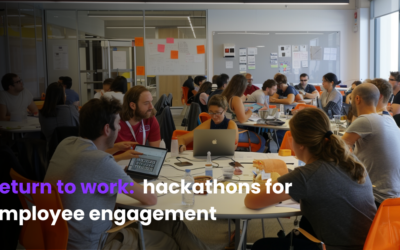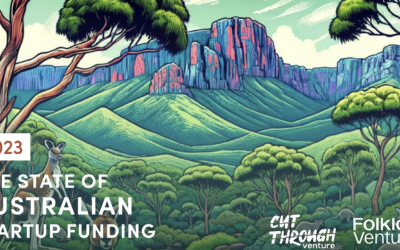The Disruptor’s ‘Big List of Hackathons‘ was started in 2016 as a way to record and track the hackathons happening across Australia. As 2018 is drawing to a close we thought it might be fun to have a look over the list – filled with both past and present hackathons – and see what it can tell us about the hackathon landscape in Australia.
Over the last 3 years, we’ve recorded 356 hackathons across Australia and here’s some of the things we’ve learned from analysing them.
- Hackathons grow year-on-year: The number of hackathons in Australia is on the rise. Since we started tracking Australian hackathons in May of 2016, we’ve seen the amount of hackathons being held grow each year. The number of hackathons in 2018 was nearly double the number from 2017 – and with 5 hackathons already open for registrations, 2019 looks likely to be another big year.
- More hackathons in more locations: The hackathon landscape in Australia is growing! 2018 saw hackathons being held in every single state and territory, as well as virtually and globally. This year we also saw hackathons move from capital cities into outer suburbs and rural areas, breaking down some of the barriers to participation!
- November is hack month! By looking at all the hackathons we’ve recorded, we’ve been able to see that November is the most popular month for hackathons, while January is the least popular. We can’t know for sure, but it’s possible that there might be some correlation between the high number of hackathons in November (and July – the second most popular month) and university breaks. January is usually quiet because it’s summer in Australia, and we’d rather go to the beach than hack. Mostly.
- We are hacking for impact: 2018 saw a push for social impact. While Tech/Digital has monopolised the hackathon landscape since we started this list in 2016, many of the other themes have risen and fallen over time. This year, social impact was the second most popular theme for hackathons – moving up from 6th spot in 2017. This increase in interest for social impact events, where people are taking time out of their weekend (usually) to try and find solutions that will make things better for other people is a wonderful testament to the selflessness of people and the good they can do when they put their minds to the task.
- Hackathons are looking to the future! This year saw an increase in hackathons centered around future building. Future building was the 5th most popular theme in 2018, however, many of the health, environment, resources, and social impact themed events could also have been considered to be about finding solutions for the future. In addition to this, we also saw more hackathons looking for younger participants, with 6 events created specifically for high school students. Seeing as most hackathons are 18+ events it’s been interesting to see this rise in high school level hackathons and the solutions they’ve produced. Hopefully getting young people involved is a trend that will continue in the years to come!
We’ve also put together the info-graphic below which showing some of the key takeaways from our findings.
!function(e,t,s,i){var n=”InfogramEmbeds”,o=e.getElementsByTagName(“script”)[0],d=/^https:/.test(e.location)?”https:”:”https:”;if(/^\/{2}/.test(i)&&(i=d+i),window[n]&&window[n].initialized)window[n].process&&window[n].process();else if(!e.getElementById(s)){var r=e.createElement(“script”);r.async=1,r.id=s,r.src=i,o.parentNode.insertBefore(r,o)}}(document,0,”infogram-async”,”https://e.infogram.com/js/dist/embed-loader-min.js”);
At Disruptor’s Handbook we shift mindsets, innovate products and transform organisations. We help enterprises respond to a disruptive and uncertain future. As part of that, we run dozens of hackathons every year by framing the challenges and co-designing the experience with our client’s goals and needs in mind. If you’re interested in working with us to design your own hackathon experience get in touch!



